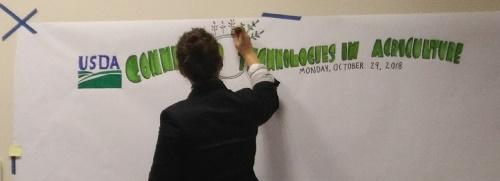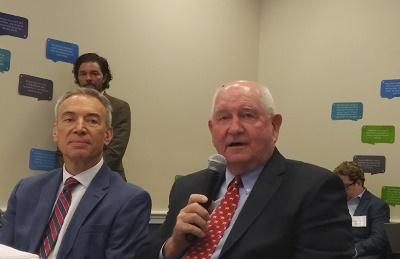By Joshua Seidemann, Vice President of Policy, NTCA–The Rural Broadband Association
November 9, 2018
Last week, USDA hosted a roundtable to discuss smart agriculture. As roundtables go, it was a pretty big deal - Secretary Sonny Perdue was there, not just to speak but to ask and take questions, as well. Deputy Secretary Stephen Censky also joined us, as did Anne Hazlett (Assistant to the Secretary for Rural Development) and Janine Miller (Senior Advisor for Rural Infrastructure). It was a relatively small group populated mostly by ag producers and technologists who live the axiom that "Everyone needs a farmer three times a day." And, it is increasingly clear that farmers need technology. Consider these perspectives that were shared at the meeting.
-
Robots do not milk cows; they help farmers manage cows.
-
Farmers change because of crisis or necessity; tech is becoming a necessity.
-
Farming is logistics. Corn can be harvested and stored in an elevator, but cherries have only 24 peak hours to get from farm to market. If information is not available in real time, it's not useful.
We talk a lot about telemedicine and distance education and smart ag. In theory, it makes sense. But, it takes a practitioner—those who understand from personal experience the difference that technology can make—to give life to the words. One participant explained that precision agriculture is this generation's genetic engineering. It is lowering input costs and leading "agricultural artisans" to become scientists. A fifth-generation farmer explained away the misconception of planting a seed and letting nature (along with irrigation and fertilizer) take its course; variable rate seeding can lower costs by $5.00 an acre.
But, it takes a practitioner—those who understand from personal experience the difference that technology can make—to give life to the words.
And broadband everywhere is necessary, whether for row crops, specialty crops or livestock. There was agreement around the table that fiber to the homestead is critical, but that connection must be supplemented across the street and in the field. Likewise, sensors in the field are not enough to help farmers run their business once they return home. One livestock expert described a farm with "7,500 cows and dial-up."
Consider this article, shared by the Association of Equipment Manufacturers (AEM), which describes savings of $12.50/acre when smart farming is applied to cotton. Or these findings from the Ohio State University which found that variable rate applications in no-till situations can save $36-$88/acre as compared to farming without smart agriculture.
And it's not just crops. Livestock and dairy production benefits from anti-infanticide technology, precision feedings, and unmanned aerial vehicles. And, it's not just food: Rolls Royce only uses perfect hides. Connected cows can be monitored to ensure they do not roam near barbed wire fences.
Everyone eats; everyone needs a farmer. Smart ag is technology that touches everyone. Now we just need to keep working so that broadband touches everywhere.



